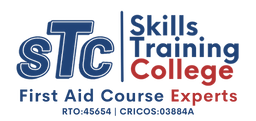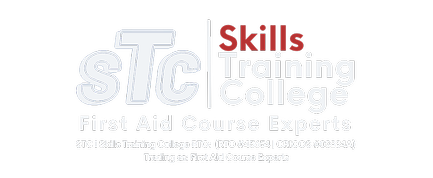First aid for minor wounds is a crucial skill that empowers individuals to address injuries promptly and promote optimal healing. Minor wounds, such as cuts, scrapes, puncture wounds, and abrasions, are common occurrences in daily life and can be effectively managed with skills learned in a first aid course.
Know About Different Types Of Wounds
Before diving into first aid techniques, it’s important to understand the different types of wounds. First Aid Course Experts can help you distinguish the difference between these minor injuries.
Cuts: Cuts, also known as incisions, is a break or opening in the skin caused by a sharp object. Cuts can vary in depth and length, and their severity depends on the force and nature of the injuring object.
Scrapes: Scrapes occur when the skin is rubbed or friction occurs against a rough surface. These wounds are characterized by superficial damage to the outer layer of skin, resulting in pain and exposed, often raw tissue.
Puncture Wound: Puncture wound are caused by sharp, pointed objects such as nails, needles, or animal or human bite. These wounds create small, deep holes in the skin, making them prone to infection.
Abrasions: Abrasions result from the skin rubbing against a rough surface, causing the outer layer of skin to wear away. They are often characterized by pain, redness, and sometimes bleeding.
What Do I Need In My First Aid Kit?
Before we delve into specific first aid techniques, having a well-stocked first aid kit is essential. Here are some must-have supplies for treating cuts and scrapes:
Antiseptic wipes or solution: To clean the wound and prevent infection.
Sterile gauze pads: For covering the wound and absorbing any blood or fluids.
Adhesive bandages: Various sizes to suit different wounds.
Antibiotic ointment: To promote healing and prevent infection.
Tweezers: For removing any debris or splinters from the wound.
Medical tape: To secure dressings in place.
Disposable gloves: To protect both the caregiver and the injured person from infection.
Pain relievers: Over-the-counter pain relievers can help manage pain.

| Step | Action | Details |
|---|---|---|
| 1 | Stop the Bleeding | Apply direct pressure with a clean cloth or sterile dressing. Elevate if possible. |
| 2 | Clean the Wound | Gently rinse with clean water. Avoid harsh chemicals. |
| 3 | Protect the Wound | Apply antibiotic ointment and cover with a sterile dressing or bandage. |
| 4 | Elevate the Injured Area | If possible, elevate to reduce swelling and promote circulation. |
| 5 | Pain Management | Use over-the-counter pain relievers like acetaminophen or ibuprofen as needed. |
| 6 | Monitor for Infection | Watch for signs of infection like increased redness, swelling, or pus. |
| 7 | Seek Medical Care | Consult a professional for deep cuts, potential infection, or if tetanus shot is needed. |
Wounds First Aid: Cuts And Scrapes
Here’s a step-by-step guide for basic wound care:
Stop the Bleeding
Apply direct pressure to the wound using a clean cloth or sterile dressing. Use your hands, gauze pad or gentle dressing to apply firm, steady pressure to stop bleeding. If the bleeding doesn’t stop, elevate the injured area if possible and continue applying pressure.
If the bleeding is severe, consider using a tourniquet as a last resort to cover and treat the wound. Note the time the tourniquet was applied and communicate this information to emergency services.
Clean the Wound
Rinse the wound gently with clean water to remove dirt and debris. Deep wounds caused by sharp objects can result into fragile skin. Avoid using soap, hydrogen peroxide, or iodine directly in the wound, as they can be harsh and delay healing. If available, use a mild antiseptic solution around the wound but not inside it. Call your doctor for further advice on wound first aid treatment.
Protect the Wound
Apply an antibiotic ointment to the cleaned wound to help prevent infection. Cover the wound with a sterile dressing or a clean bandage to protect it from further contamination.
Elevate the Injured Area
Elevating the wound (minor cuts, scrapes, puncture wound) can help reduce swelling and promote better circulation, which aids in the body’s natural healing process. However, not all wounds may benefit from elevation, and the decision to elevate should be based on the specific circumstances of the injury.
Pain Management
If there is increasing pain, you can give over-the-counter pain relievers like acetaminophen or ibuprofen, following the recommended dosage. These can help the person as the wound heals. While for minor cuts, the pain is manageable and the pain often goes away as the skin heals.
Monitor for Signs of Infection
Keep an eye on the wound for signs of infection, such as increased redness, swelling, warmth, or drainage of pus in the surrounding skin. Get immediate medical attention if signs of infection develop.
Seek Immediate Medical Care
Encourage the person to seek professional medical care, especially if there is deep cut caused by a dirty or rusty object, or if there is a risk of infection or significant blood loss. Getting a tetanus shot may also be recommended. Call your doctor for further medical attention.
Conclusion
Mastering the art of wound care involves not only understanding the diverse nature of injuries but also adopting a proactive approach to providing immediate assistance. Whether it’s a minor cut, a scrape from a fall, or a more serious wound, the principles of first aid remain consistent: assess the situation, prioritize safety, control bleeding, clean the wound, protect it from infection, and seek professional medical attention when necessary.
In times of injury or uncertainty, choosing a first aid training that prioritizes your safety is important. By choosing to enroll in our individual or corporate booking, you are investing in a safer and more resilient community. Armed with the knowledge gained from our training and first aid blogs, you become a valuable asset in emergency situations, potentially making a difference in someone’s life.
Join us on this empowering journey towards building a community of confident and capable first aid responders – because preparedness today ensures a safer tomorrow.

